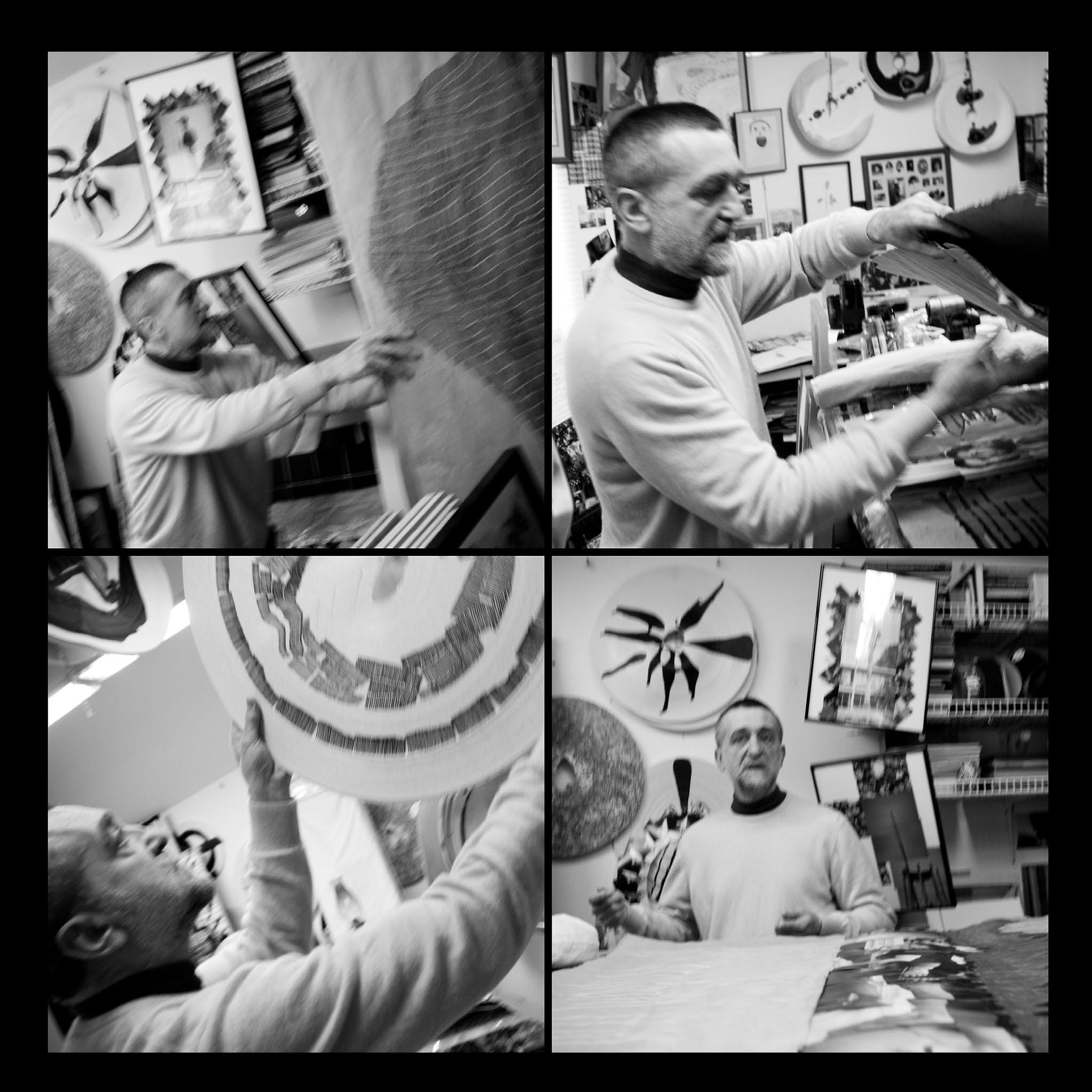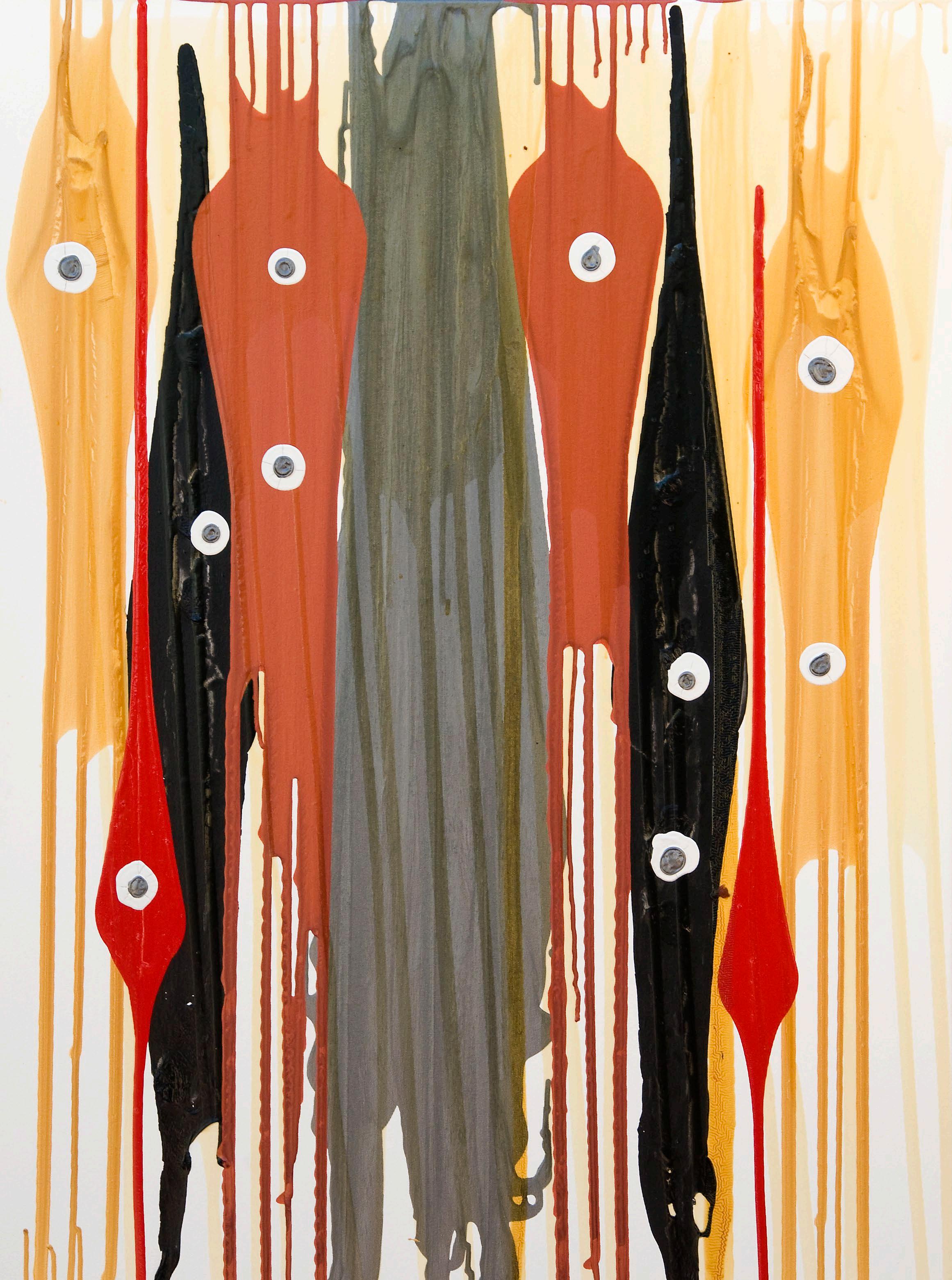
4 minute read
Gianfranco Paolozzi
Interview by Trina Merry | Photography by Daniel Garcia
If you turn on the news for thirty seconds, you will find a myriad of things to fear- a recession, high unemployment rates, unstable corporations, uncertain state budgets, and Mother Nature gone berserk. How does one live in an environment of fear and change? If you stay tuned to the commercials, corporations and pharmaceutical companies have several solutions for sale.
Advertisement
Local artist Gianfranco Paolozzi has some interesting ideas about change, failure and the things we buy only to discard.
To Gianfranco, art reflects life. The materials he chooses, his process, and where he exhibits his works finds root in everyday life. He is directed by chance and his compass is his heart.
He uses recycled materials found in his immediate environment, rescuing things that would have been ignored or wasted. Yet his motivation is not to be a trendy “ green ” artist. Rather he captures in his work what he calls “intentional chances” and welcomes what others see as mistakes or failures.
He takes natural materials and make-up free photography subjects and “puts his imagination on top” in the form of liquid or linear markings. It is an emotional journal of his life that tells the story of a human being touched by chance.
Markings Series
Gianfranco doesn’t write much so he invented a process he calls “markings” to journal his emotions. “I started to make the lines I wanted in the moment, line after line, repetition after repetition. The diary is a repetition of words- repetition of the letter ‘ a, ’ the letter ‘b,’ who knows how many times.”
He claims no day’s worth of markings is the same and he cannot recall the emotions or stories he writes from the day. It has to be felt in the moment.
“Sometimes people say ‘oh the lasagna was so delicious.’ But I cannot remember flavors, how the lasagna tasted a week ago. I’m pretty sure it was delicious but I cannot remember.”
Collagement Series
Gianfranco captures an environment over a period of time in a non-linear process that embraces chance. He takes a series of progressive photos from the ground to the sky over a period of a few minutes, mixes the photos up like a deck of cards, and then re-assembles them onto works he calls “collagements.”

“I live my art. It’s about chances. When I take a picture of your foot for example, who knows what’s going to happen by the time I get to your face. There’s the possibility no one will be there by the time I go to shoot the head or that a bird will fly over you. So what is interesting to me is when I combine those images, when I was shooting your foot, the bird wasn’t there yet.”

Roundels Series
People in San Francisco were surprised to learn Gianfranco’s series “Roundels” were not ceramics. When Gianfranco discovered discarded label and sticker paper rolls in the dumpsters at his day job, he fell in love and felt compelled to save them.
“I fall in love easy. I don’t know how I’m going to use these things, all I know is its wasted paper and they are round and I don’t know where to put them all.”
How he created the roundel was through necessity and chance.
“There’s a hard cardboard around the outside that compresses it maintains its nice round form. As soon as I took the middle out, the round paper starts to make some decision about how to go into the middle. In a few days they started to bubble and make their own movement. Two or three of them popped and I lost them. There were some with curves and I had to find a Roundels and Gianfranco at Red Berry Cafe way to stop those things. If I don’t do something, I will lose all of them. I had a bucket of Elmer’s glue and I put it all over them. When I came back the next morning, solid! I had a nice Roundel that looked almost ceramic. It’s one of the most delicious experiments I’ve ever had.”
He put his markings on them, first in pen like his journals, and then in liquidized rubber.
Jack-in-the-Box Series
Gianfranco is filling up his studio with boxes from the kitchen to create a series of work based on the idea of the Jack-in-the-box. He takes pictures of a subject in the same method as his collagements, places them at random on the box, and then allows the shape of the box to dictate the shape of the work. He cuts off leftover photo corners and mimics any holes or cutouts in the box. Then he names the work after the subject such as “Kat-in-the-box” or “Lacey-in-the-box.”

Sofia in Wonderland

Elina in the Box

In Memory of My Father: My Father Will Die in Three Years, 1978

In Memory of My Father: My Father Will Die in Three Years, 1979

In Memory of My Father: My Father Will Die in Three Years, 1980

